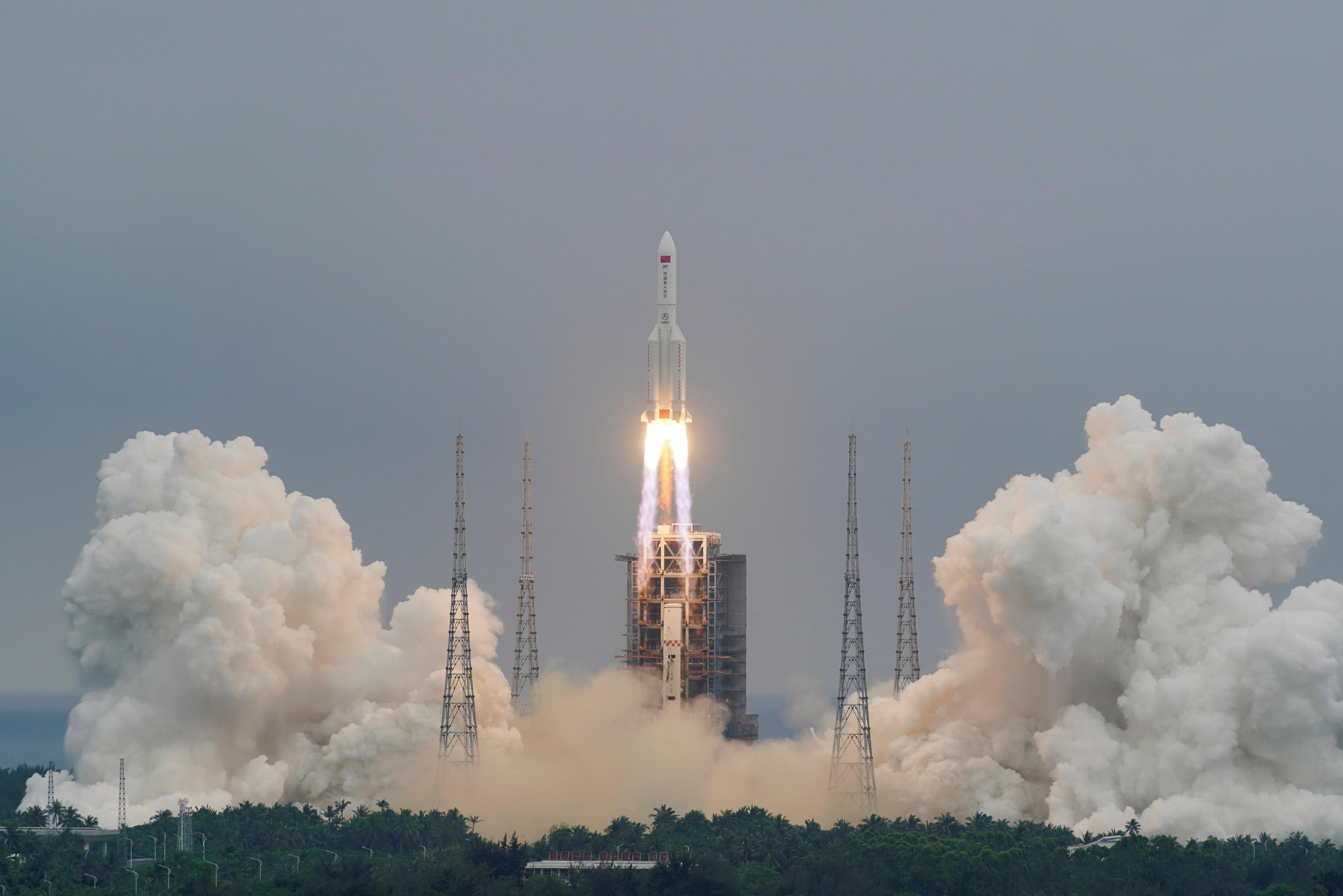Thomas Pesquet, our national astronaut who settled for six months in the international station ISS will soon see neighbors arriving in space!
China successfully launched on the night of Wednesday to Thursday, the first of three elements of its space station, the "CSS" whose construction will require until the end of 2022 about ten missions.
Read alsoChina launches Tianhe, the first "brick" of its own space station
The first central Tianhe module (“Celestial Harmony”), the future home of Chinese astronauts, was propelled by a Long-March 5B rocket from the Wenchang launch center, on the island of Hainan (south).
CHINA SPACE STATION'S TIANHE LAUNCHED INTO ORBIT!
🇨🇳
China just launched the core module of their new space station.
A Long March-5B rocket launched from the Wenchang Spacecraft Launch Site at 11:22 AM PhST, carrying the #Tianhe module.
| video via @CGTNOfficial pic.twitter.com/LWkD7DjCXk
- Earth Shaker PH (@earthshakerph) April 29, 2021
The station "will be a major breakthrough for Chinese human spaceflight capabilities," said Jonathan McDowell, astronomer at the Harvard-Smithsonian Center for Astrophysics in the United States.
"This should allow them to have a permanent human presence in space and therefore significantly increase the experience of their astronauts."
Chinese Long March 5B with the Tianhe-1 Space Station Core Module
Symphony before launch pic.twitter.com/T89A7Npxdv
- CN Netizen (@CN_Netizen) April 29, 2021
Named in English CSS for "Chinese Space Station" and in Chinese Tiangong "Heavenly Palace", this station will operate in low earth orbit, that is to say between 340 and 450 km altitude above our heads.
When complete, the CSS should weigh almost 100 tonnes.
For comparison, it will be about three times the size of the International Space Station (ISS).
Manned missions to the moon, space tourism and space science
The Tianhe module, 16.6 meters long and 4.2 meters in diameter, will serve as the heart of the station, including its control post.
Soon, a cargo vessel, Tianzhou-2, should be launched and dock at Tianhe in May on schedule.
Then the manned mission “Shenzhou 12” must take astronauts aboard this CSS in June to begin assembly.
Once completed in 2022, the life of this station is expected to be 10 to 15 years.
"It will serve as a base for larger-scale operations: manned missions to the Moon, space tourism, space science or even concrete applications for humans", explains Chen Lan, analyst for the GoTaikonauts.com site, specializing in the Chinese space program. .
With the Chinese CSS and the ISS headed by the American space agency (Nasa), there will therefore be two stations in orbit around the Earth.
“Politically, this symbolizes the strengthening of competition between the United States and China,” adds Chen Lan.
Tianhe separation confirmed.
The first element of China's space station is now in orbit after a successful launch on China's heavy-lift Long March 5B rocket.https: //t.co/8DhRzsKEBj pic.twitter.com/ysz5btzodZ
- Spaceflight Now (@SpaceflightNow) April 29, 2021
Beijing said it was open to collaborations with abroad. Chinese and UN scientists have thus selected experiments by foreign researchers, which will be carried out in the future CSS. "Russia and Pakistan will most likely be the first partners and could be followed by the European Space Agency (ESA)", adds the expert. This rapprochement of Russia and China could also initiate the decline of the exceptional collaboration between the United States and Russia for decades in the field of space and this despite political tensions on Earth.
The fact remains that this station positions China as a key player in space in the years to come after having put in place the means to catch up with the United States, Europe and Russia. China plans to land a robot on Mars next month or to send humans to the Moon by 2030. It has also announced that it wants to build a lunar base with Russia.

